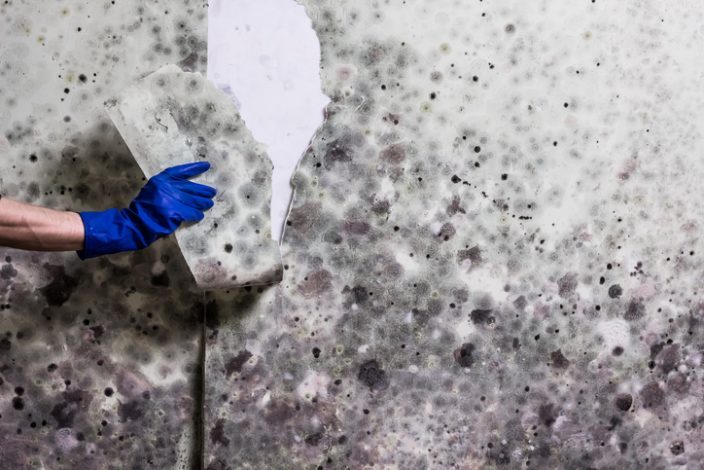Comprehensive Post Mold Remediation Procedures
Comprehensive Post Mold Remediation Procedures
Blog Article
Your Ultimate Overview to Article Mold And Mildew Remediation Methods
Browsing the realm of post-mold removal techniques is a careful procedure that requires focus to information and a comprehensive understanding of the ins and outs involved. In the consequences of mold and mildew problem, recognizing how to successfully eradicate the mold and mildew and stop its reoccurrence is extremely important for preserving a healthy and balanced interior environment. From picking the ideal cleansing and sanitizing approaches to applying approaches for lasting mold and mildew prevention, each action in the removal trip plays a vital function in ensuring a successful result. As we begin on this exploration of post-mold removal techniques, we will certainly uncover the vital strategies and finest techniques that can help you recover your area to its pre-mold condition and guard it against future mold and mildew hazards.
Comprehending Post-Mold Remediation Process
After completing the mold remediation procedure, it is critical to understand the post-mold removal techniques that are essential to make sure a efficient and comprehensive cleanup. Once the mold has been eliminated, the following step involves cleaning and sanitizing the impacted areas to stop any regrowth of mold and mildew. This consists of using specialized cleansing representatives to wipe down surfaces and eliminate any staying mold and mildew spores. It is vital to dry out the area completely to discourage the development of mold in the future (After mold remediation). Correct air flow and dehumidification can help in this process.
Furthermore, performing a final evaluation post-remediation is important to ensure that all mold has actually been successfully removed. This examination must include a thorough aesthetic check along with possibly air sampling to validate the lack of mold and mildew spores airborne. Added removal might be necessary if the evaluation exposes any type of sticking around mold. Lastly, educating owners on safety nets such as controlling dampness levels and quickly addressing any type of water leaks can help preserve a mold-free atmosphere.
Effective Cleaning and Sanitizing Approaches

Avoiding Future Mold Growth

Relevance of Proper Ventilation
Correct ventilation plays a critical function in protecting against wetness accumulation, a vital factor in mold growth within interior atmospheres. Efficient ventilation systems help remove excess moisture from the air, minimizing the opportunities of mold and mildew spores finding the dampness they require to sprout and spread. Without appropriate ventilation, interior areas can become a breeding place for mold and mildew, leading to prospective health and wellness threats and structural damage.
By guaranteeing correct air flow, ventilation systems can likewise aid in drying out damp locations a lot more promptly after water damages or flooding cases, further discouraging mold development. testing air quality after mold remediation. In spaces like washrooms, basements, kitchens, and attics where moisture degrees tend to be greater, setting up and maintaining reliable air flow systems is critical in protecting against mold and mildew problems

Tracking and Maintenance Tips
Given the crucial duty that appropriate air flow plays in stopping mold development, it is vital to develop reliable tracking and upkeep ideas to make sure the continued performance of get redirected here ventilation systems. Normal inspections of ventilation systems ought to be carried out to inspect for any kind of indications of clogs, leakages, or breakdowns that can impede proper airflow. Tracking humidity levels within Learn More the building is also critical, as high humidity can add to mold and mildew growth. Installing a hygrometer can assist track moisture levels and alert property owners to any spikes that may call for focus. Furthermore, guaranteeing that air filters are consistently cleansed or changed is important for maintaining the efficiency of the ventilation system. Implementing a routine for routine upkeep tasks, such as duct cleansing and HVAC system assessments, can help stop concerns prior to they escalate. By staying aggressive and alert to the condition of air flow systems, homeowner can efficiently alleviate the risk of mold regrowth and keep a healthy indoor environment.
Final Thought
To conclude, post-mold removal techniques are necessary for guaranteeing a clean and safe atmosphere. Understanding the process, carrying out effective cleaning and decontaminating methods, protecting against future mold growth, maintaining proper ventilation, and routine monitoring are all important steps in the remediation process. By complying with these guidelines, you can effectively remove mold and mildew and avoid its return, working or promoting a healthy and balanced living space for all passengers.
In the results of mold invasion, knowing exactly how to efficiently get rid of the mold and mildew and avoid its reoccurrence is vital for keeping a healthy and balanced indoor setting. Once the mold and mildew has been removed, the following action involves cleansing and disinfecting the influenced areas to stop any kind of regrowth of mold and mildew - Post Mold Remediation. After getting rid of visible mold development, it is important to clean up all surfaces in the afflicted location to eliminate any continuing to be mold and mildew spores. To further enhance mold avoidance steps, mold remover zep it is necessary to deal with underlying issues that at first led to mold and mildew advancement.Offered the vital function that appropriate ventilation plays in preventing mold and mildew development, it is critical to develop efficient monitoring and upkeep suggestions to ensure the continued capability of air flow systems
Report this page